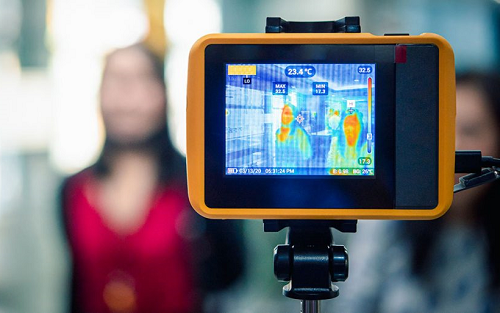Semtech Corporation (Nasdaq: SMTC), a leading supplier of high performance analog and mixed-signal semiconductors and advanced algorithms, today announced production availability of GN2558 and GN2559, Semtech’s Tri-Edge CDR SR solutions to enable next-generation data center multi-mode interconnectivity.
New SEMI-NBMC, GE Research Project to Advance Vital Signs Monitoring of Patients During Emergency Air Transport
Nano-Bio Materials Consortium (NBMC), a SEMI Strategic Association Partner, today launched a project with GE Research to develop a medical-grade wireless patch that monitors the vital signs of medical patients during emergency air transport.
CEA-Leti Scientists Demonstrate CMOS Device Fabrication at 500°C, Paving the Way to High-Performance 3D Monolithic CMOS Integration
In an FDSOI CMOS processing breakthrough, CEA-Leti scientists have pushed fabrication thermal-process boundaries down to 500°C for CMOS integration, while showing strong performance gains especially in P-type metal-oxide-semiconductor (PMOS) logic devices.
SEMI Virtual Summit Focuses on Microtechnology-Enabled Solutions to Healthcare Challenges
The latest healthtech innovations driven by microelectronics will be presented at the SEMI Virtual Healthtech Summit, Europe’s first online event to explore the critical role of semiconductors in solving the world’s most pressing healthcare challenges including COVID-19. Registration is open for the July 16, 2020, summit.
Measuring a Tiny Quasiparticle Is a Major Step Forward for Semiconductor Technology
A team of researchers led by Sufei Shi, an assistant professor of chemical and biological engineering at Rensselaer Polytechnic Institute, has uncovered new information about the mass of individual components that make up a promising quasiparticle, known as an exciton, that could play a critical role in future applications for quantum computing, improved memory storage, and more efficient energy conversion.
North American Semiconductor Equipment Industry Posts May 2020 Billings
North America-based manufacturers of semiconductor equipment posted $2.35 billion in billings worldwide in May 2020 (three-month average basis), according to the May Equipment Market Data Subscription (EMDS) Billings Report published by SEMI.
Taking Some Heat: Thermal Imaging for Fever Detection in 2020
As government and business leaders start to talk about “returning to normal,” and looking to thermal cameras to help, questions remain about how and whether the latest technology can help prevent the spread of COVID-19.
Call for SEMICON West 2020 “Best of West” Award Applications
SEMI today began accepting SEMICON West 2020 exhibitor applications for the Best of West award recognizing innovative new products or services that are significantly advancing the electronics manufacturing supply chain or a particular manufacturing capability.
Intel Elects Dion J. Weisler to Board of Directors
Intel Corporation today announced that Dion J. Weisler, former president and CEO of HP Inc., was elected to Intel’s board of directors. Weisler will serve as an independent director and member of the compensation and finance committees.
Samsung Provides One-Stop Foundry Design Environment with the Launch of ‘SAFE Cloud Design Platform’
Samsung Electronics Co., Ltd., a world leader in advanced semiconductor technology, today announced the launch of ‘Samsung Advanced Foundry Ecosystem (SAFE) Cloud Design Platform (CDP)’ for fabless customers, in collaboration with Rescale, a leader in high performance computing (HPC) applications in the cloud.
